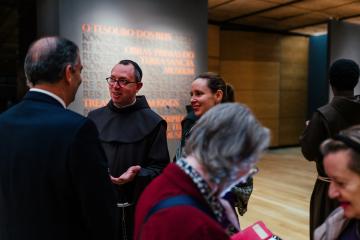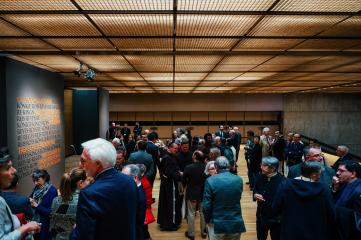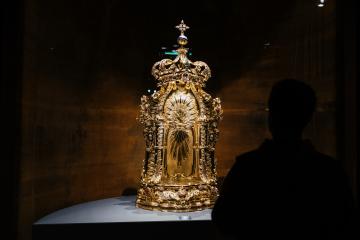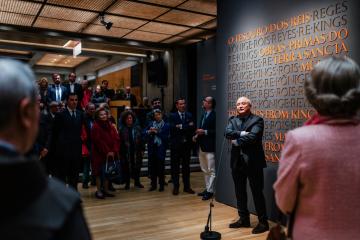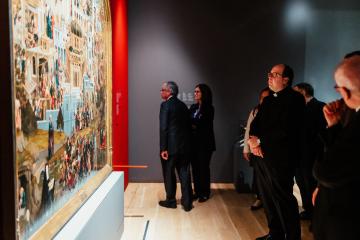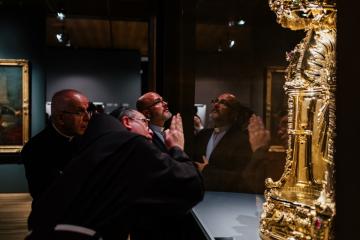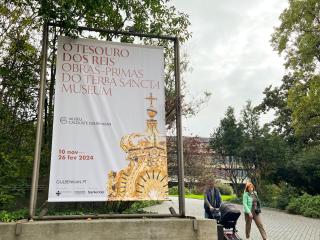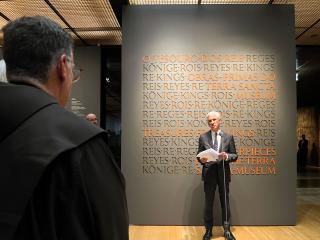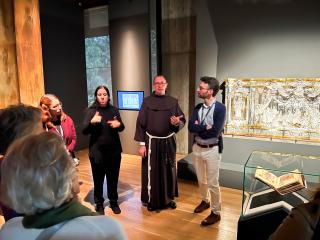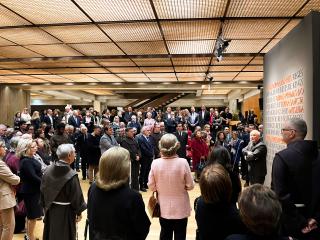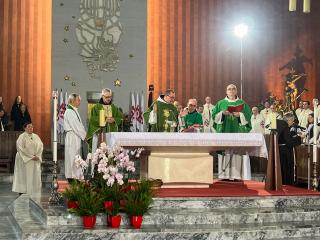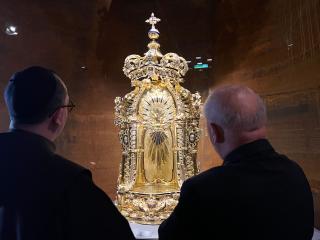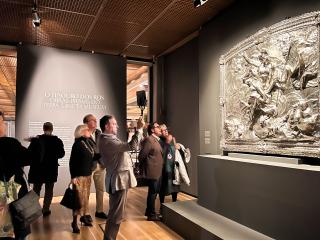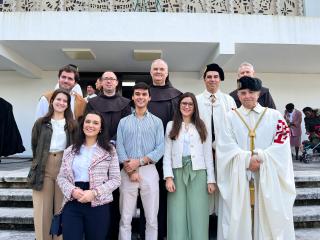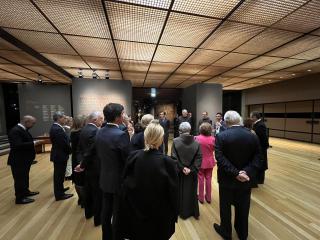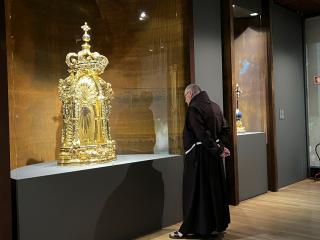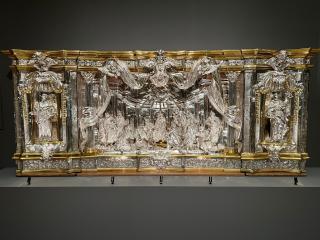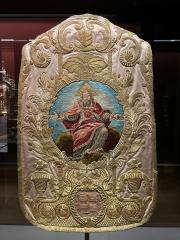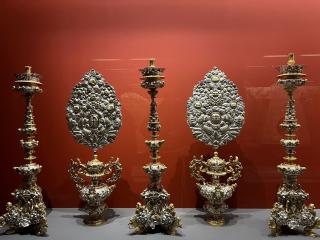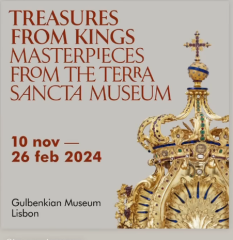
A few days ago the exhibition “Treasures from Kings: Masterpieces from the Terra Sancta Museum” was inaugurated at the prestigious Calouste Gulbenkian Museum of Lisbon, which will be open to the public until 26 February 2024.
The exhibition hosts some of the greatest works of art of the extraordinary artistic treasure of the Custody of the Holy Land, accumulated thanks to the gifts made by various European Catholic monarchs over 500 years. Unique pieces (religious articles, jewellery, ornaments and sacred vestments) of rare craftsmanship, given by the European Royal Households to show their devotion to the Holy Places and support the Custody of the Holy Land, which over the centuries has looked after and inventoried this rich heritage.
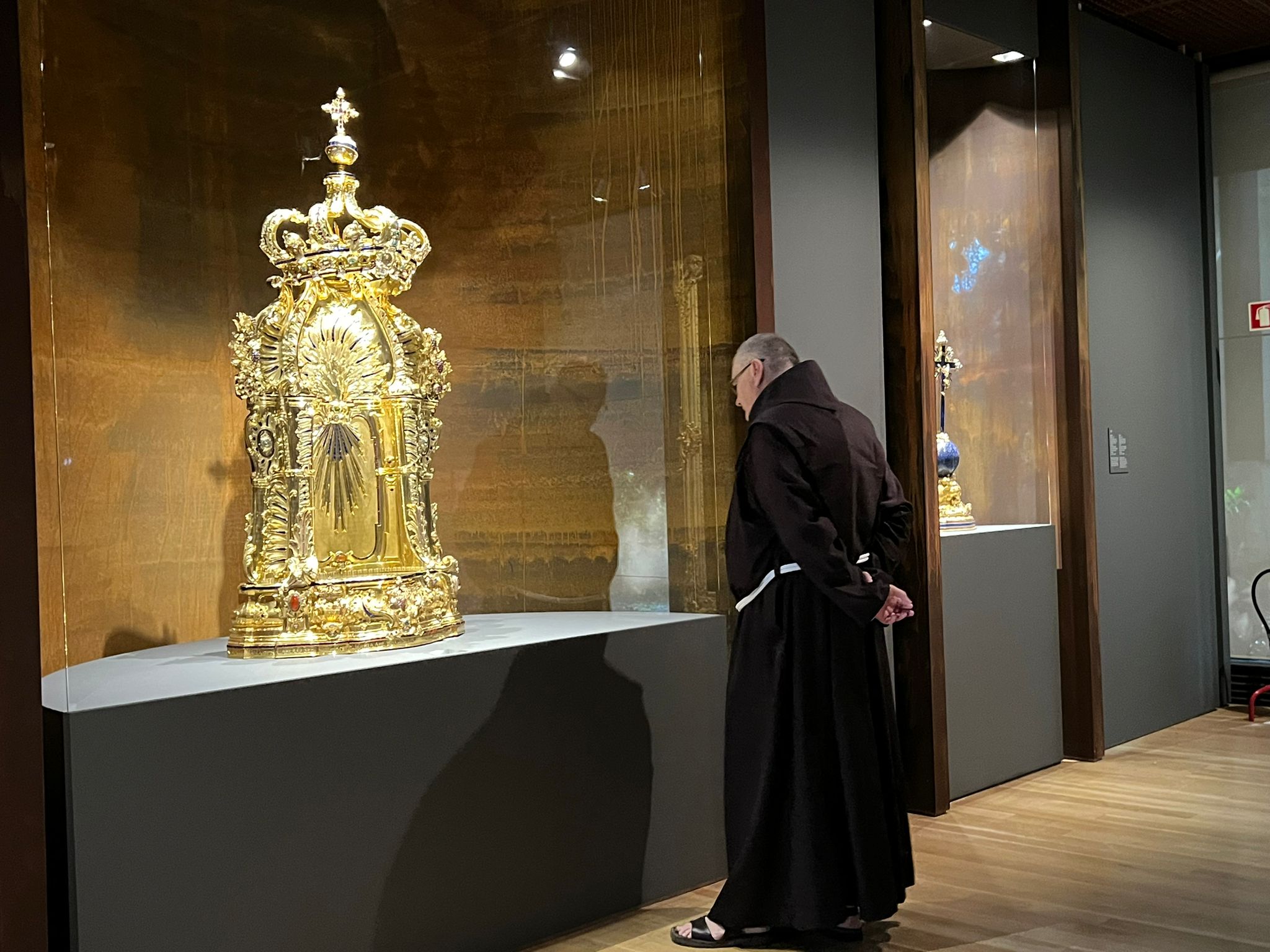
Stéphane Milovich, director of the Cultural Heritage Department of the Custody, has just returned from the opening of the exhibition: “This exhibition is an important stage in our future historical section of the Terra Sancta Museum, which will open in 2026 at St Saviour’s Convent, and it reflects what we do on a daily basis in Jerusalem, i.e. look after relations with other institutions and other cultural entities: we are delighted that our works are on display in Portugal together with Portuguese works.”
The restoration of the works
“The objects and the works of art were wrapped up and shipped from Jerusalem to Portugal early last May. In these six months, thanks to the experience of the Restoration Department of the Gulbenkian Museum and of the José de Figueiredo National Laboratory, about twenty important pieces ‒ which will be in the most important room in the Museum dedicated to the “Treasure of the Holy Sepulchre” ‒ have been admirably restored: only at European level is it possible to find experts who are so well prepared, capable of knowing the technical characteristics of this specific heritage, in this particular case, of the baroque period.”
The inauguration of the exhibition
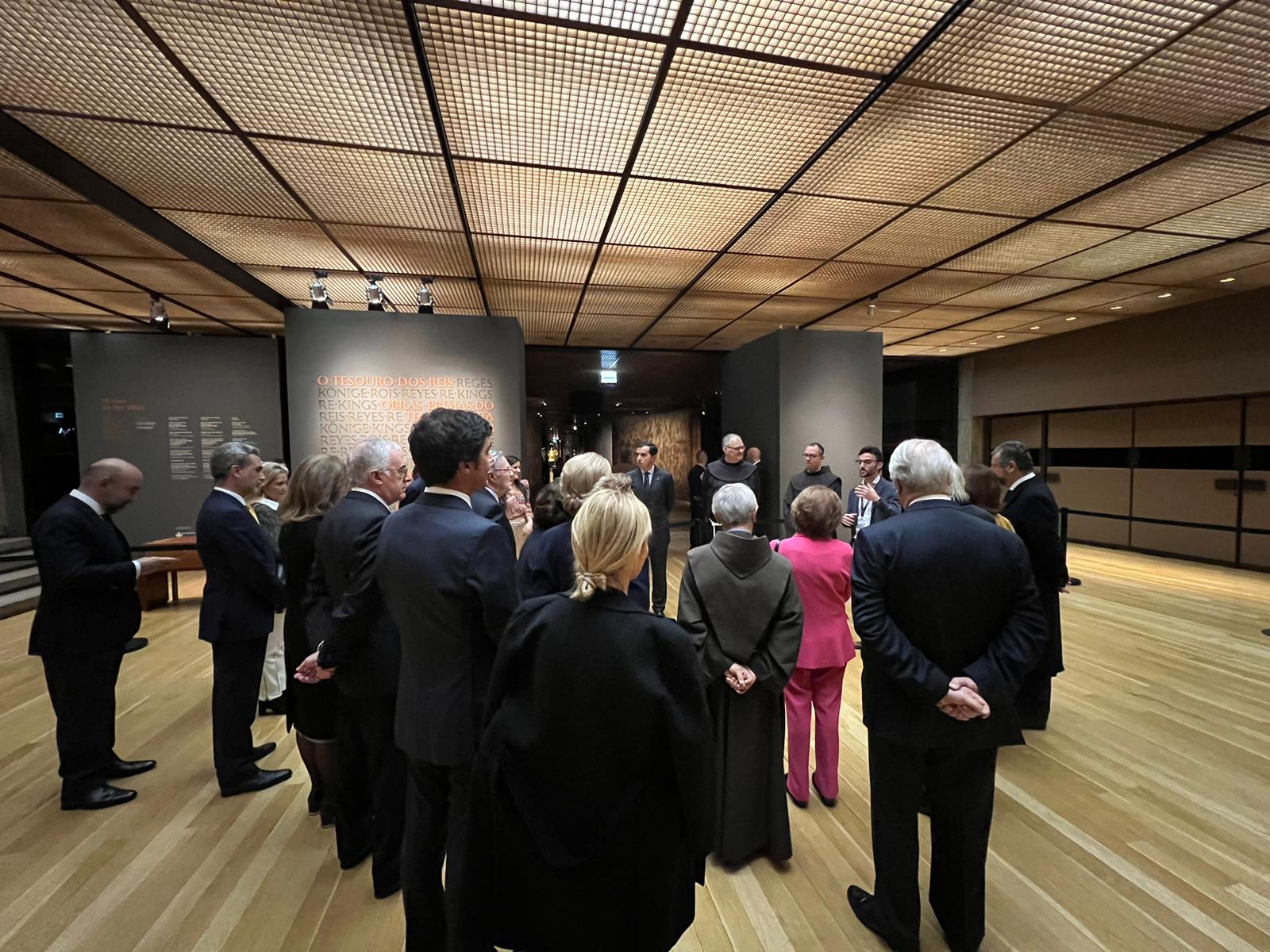
The exhibition opened on 9 November in the presence of the President of the Gulbenkian Foundation, António Feijó, of the two curators Jacques Charles-Gaffiot (French expert and consultant/member of the scientific committee of the Terra Sancta Museum) and André Afonso (curator of the Gulbenkian Museum) and of Béatrix Saule, president of the scientific committee of the Terra Sancta Museum and honorary general director of the Castle of Versailles. “Taking into account the specific nature of the collections of the Terra Sancta Museum,” fr. Stéphane continued, “the Gulbenkian suggested that Father Rodrigo Machado Soares, Master of Ceremonies of the Custody, could explain, at a dedicated session, what the exhibited works were used for.”
A rare artistic heritage

“What is really importance is that the Custody has preserved and protected an exceptional European heritage, which is unique in many cases: for example, when a devastating earthquake struck Portugal in 1755, the artistic works of an entire historical period were lost. Only we have kept lamps and liturgical vestments from the time of John V of Braganza, King of Portugal: it is fine to know that the Portuguese people can get to know, experience and see works which belonged to this heritage before the earthquake. Portugal has always had an important relationship with the Custody, and through this exhibition we have been able reconnect relations and allow local experts and scholars to get to know our heritage, which is above all theirs.”
From Santiago de Compostela, to Florence and New York in the prestigious The Frick Collection, there are many requests to exhibit the treasure of the Custody in the “Western” world before it returns to Jerusalem for good, when it will be sealed in the showcases of Jerusalem in the new section of the Terra Sancta Museum.


